The legacy of Arnold Böcklin’s “Isle of the Dead”

Between 1880 and 1886, Swiss artist Arnold Böcklin painted five versions of his most famous work, “Isle of the Dead.” They all feature a small island holding tombs and cypress trees between rocky cliffs, with a rock wall. A white-shrouded figure stands in a rowboat, nearing the island and the two foreboding pillars that mark its entrance.
Despite being my favorite, that version at the top of this article is the third one, from 1883. You can compare all of them on Wikipedia, but here's Böcklin's 1880 original:
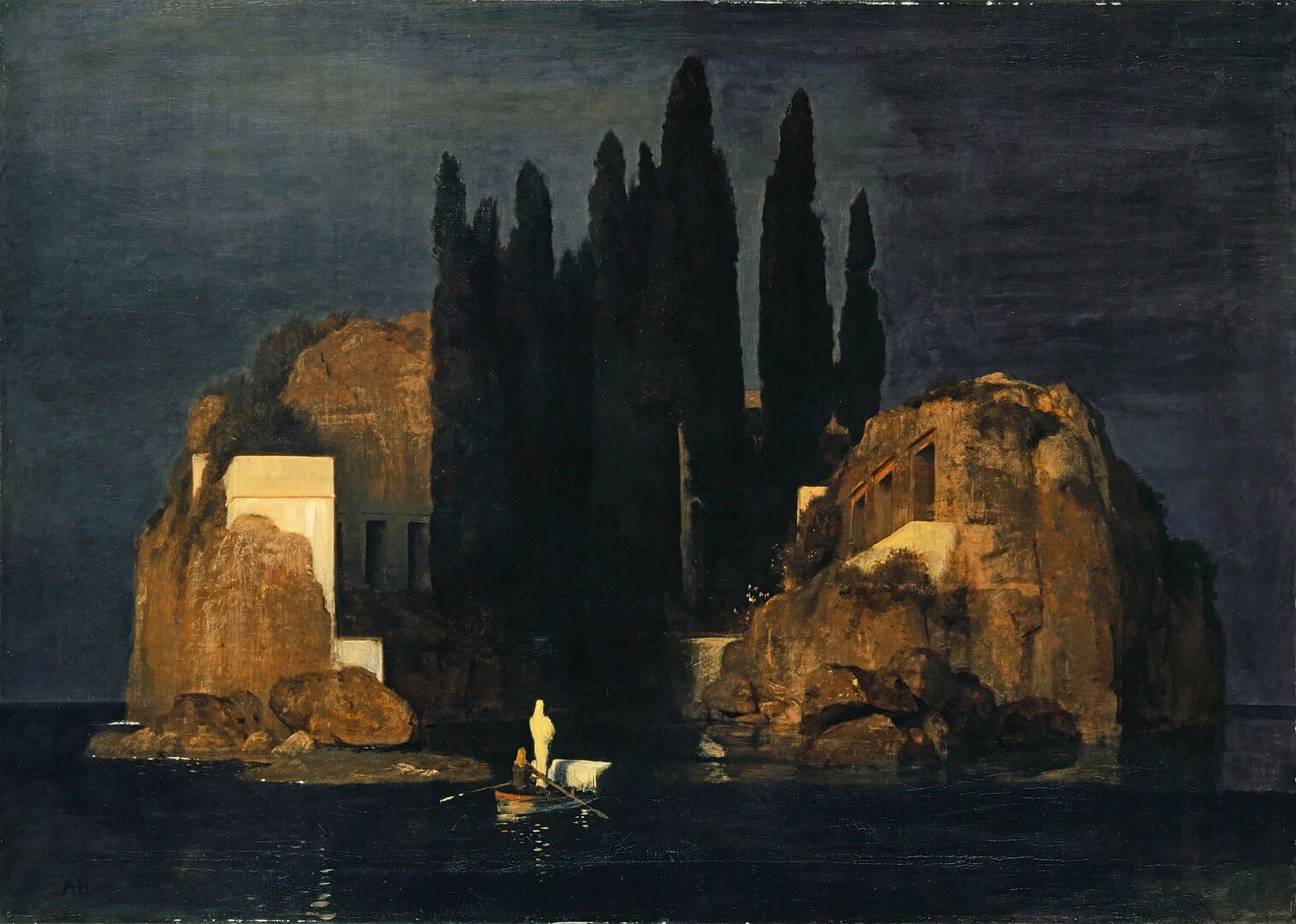
Tons of people have loved these artworks ever since they debuted, and it's easy to see why: Beauty, solumnity, grief, death. Fans included Freud, Lenin, and Hitler, and according to Vladimir Nabokov, reproductions of the painting could be “found in every Berlin home.”
There's no full explanation about what's going on. While many people see a connection to the myth of Charon ferrying souls to the underworld, the closest we have to an explanation of what's being depicted is the knowledge that Böcklin added the boat and its figure at the request of Marie Berna, "in allusion to her husband's death from diphtheria" 15 years earlier.
The paintings have inspired and been quoted in countless other stories, films, and artwork. Reproductions have popped up in movies include 12 Monkeys and Hotel Transylvania, a '40s Gothic thriller starring Boris Karloff was inspired by and named after it and then Alien: Covenant was inspired by that movie; the video game Destiny 2 references it.
Naturally, plenty of retro speculative fiction artists have covered it as well. Here's a collection of examples. Thanks goes out to friends of the blog: Deepthot, who rounded up many examples in this tumblr post, and designer John Coulthart, who has a Reactor post from 2011 on the topic along with more than a few of his own blog posts. Most of the credit likely goes to Coulthart for finding the images offline and uploading them. There's also this website, online since 1998.

This one is Caza's cover for The Isle of the Dead, a 1969 novel by Roger Zelazny that itself takes its name from the painting. I haven't read it, but from what I can tell, the climax of the story takes place on an alien replica of the island from the painting. You can check out the book free online and fact-check me on that.
Dean Ellis did a 1985 (possibly earlier) cover for the same book that depicts the Böcklin-inspired island.

Philippe Druillet's version uses the cypress trees as if they're the negative space in an evil mouth.

Most homages stick closer to the original painting than Ellis or even Druillet, though:
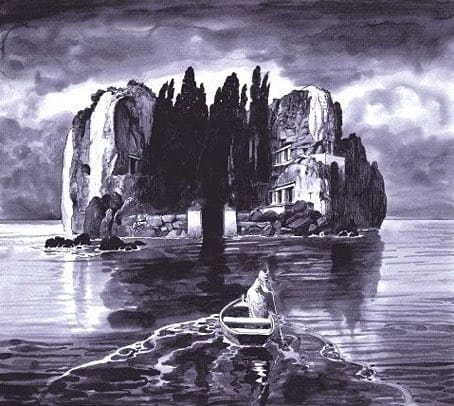
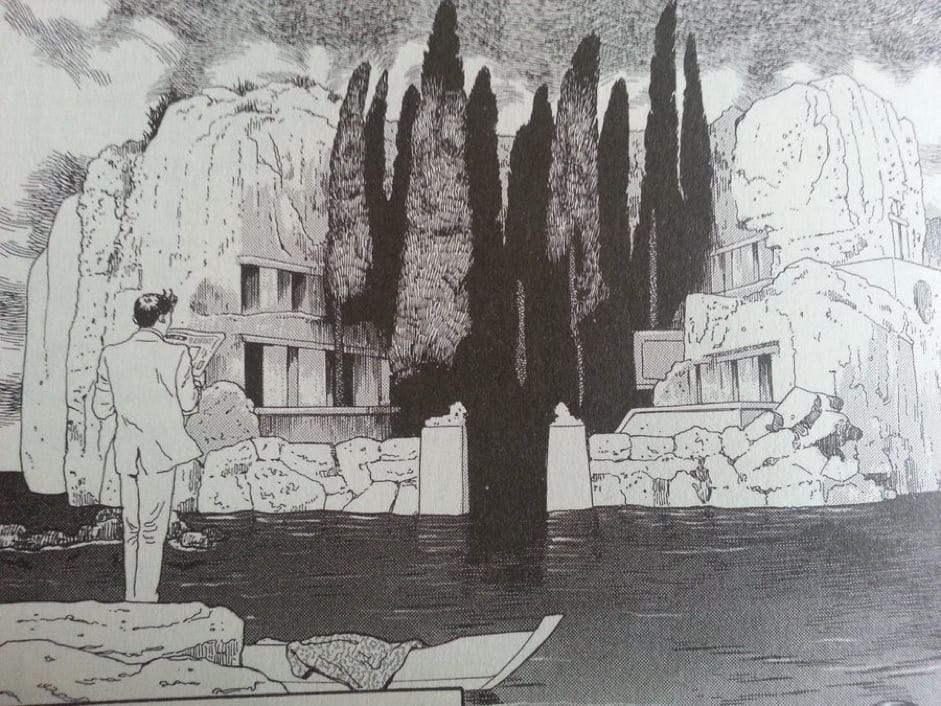
HR Giger, a fellow Swiss artist, did two different homages to Isle of the Dead in the '70s. The first is from Giger's "Green Landscapes" series.
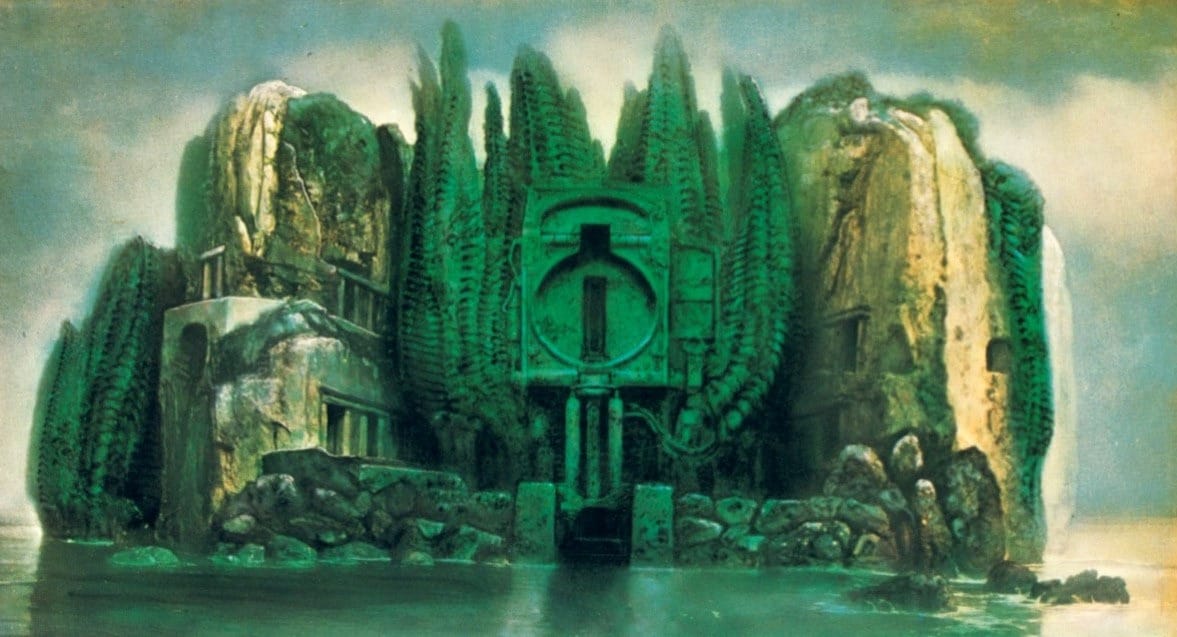
Giger did another version in his "biomechanical" style.
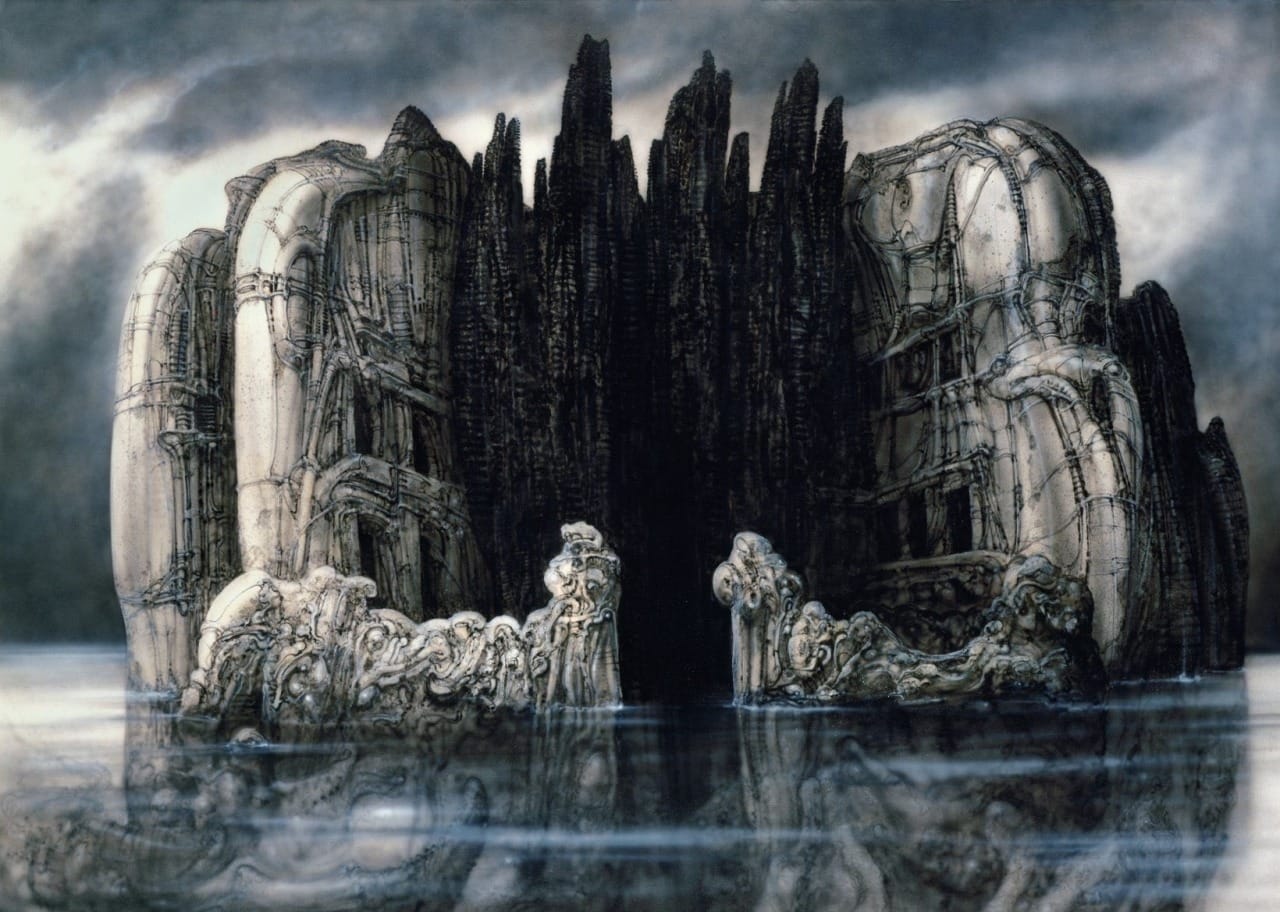
Finally, as more than a few followers have pointed out to me, the latest Hayao Miyazaki movie, The Boy and the Heron, features a location clearly based on Isle of the Dead.
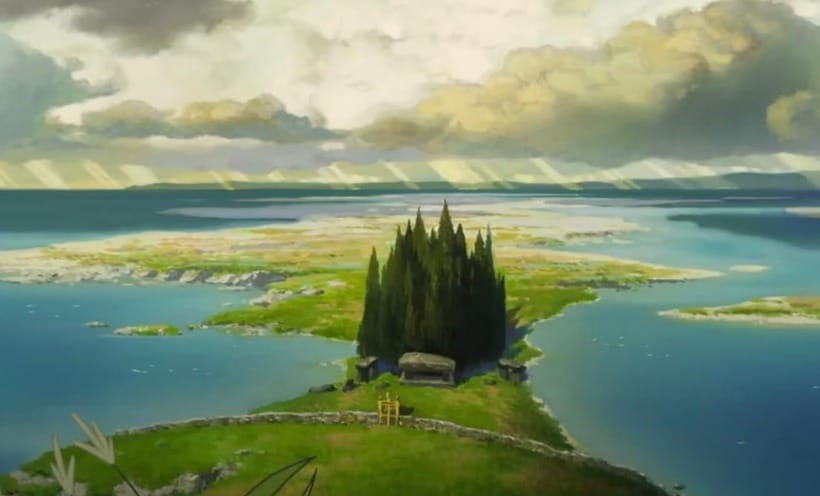
This reference makes perfect sense within the context of the movie, which you should definitely check out. The legacy of Böcklin's most famous work continues on.
Here's two other links I thought were cool: This article from It's Nice That, discussing how artists feel when their style becomes trendy and everyone wants to steal it.
Also, Michael Whelan's newsletter is relaunching with a new issue that reveals a few fun tidbits about the famed fantasy/sci-fi cover artist, like the fact he almost passed on his first Brandon Sanderson cover.
Next Time: Giant Teeth